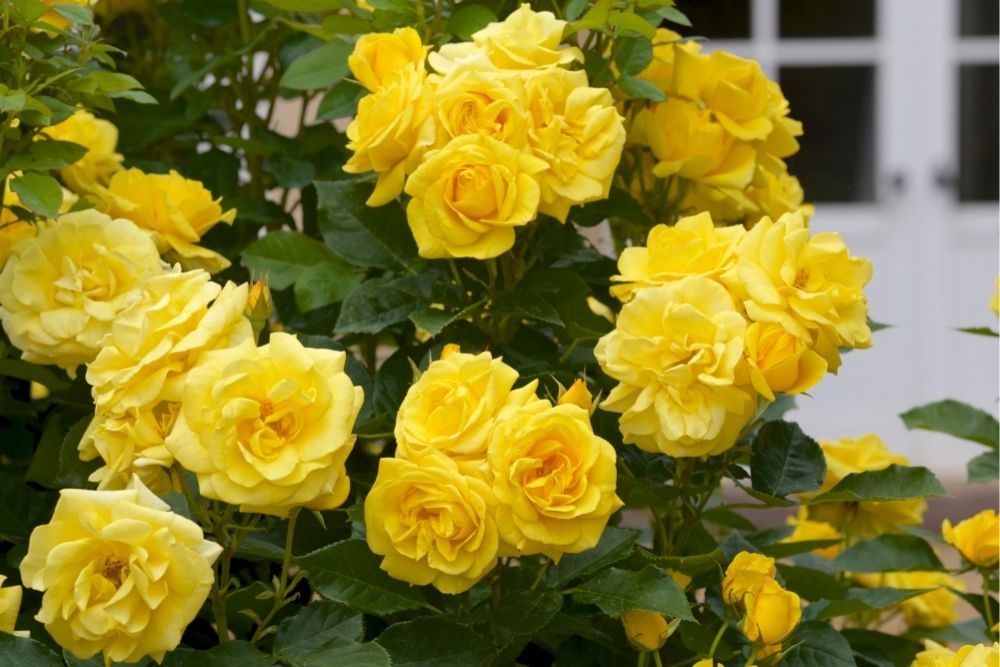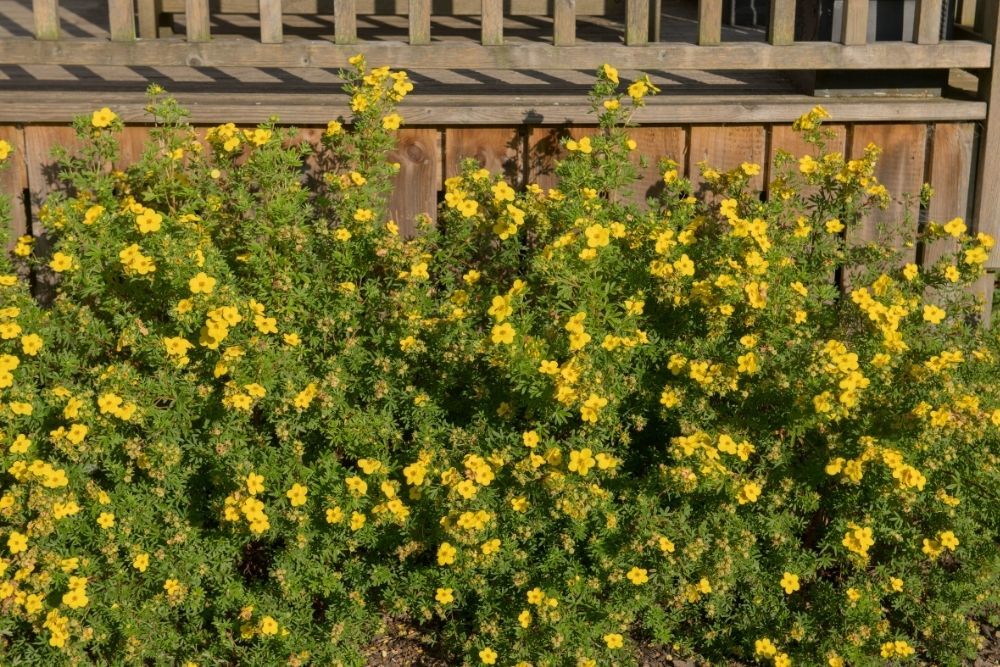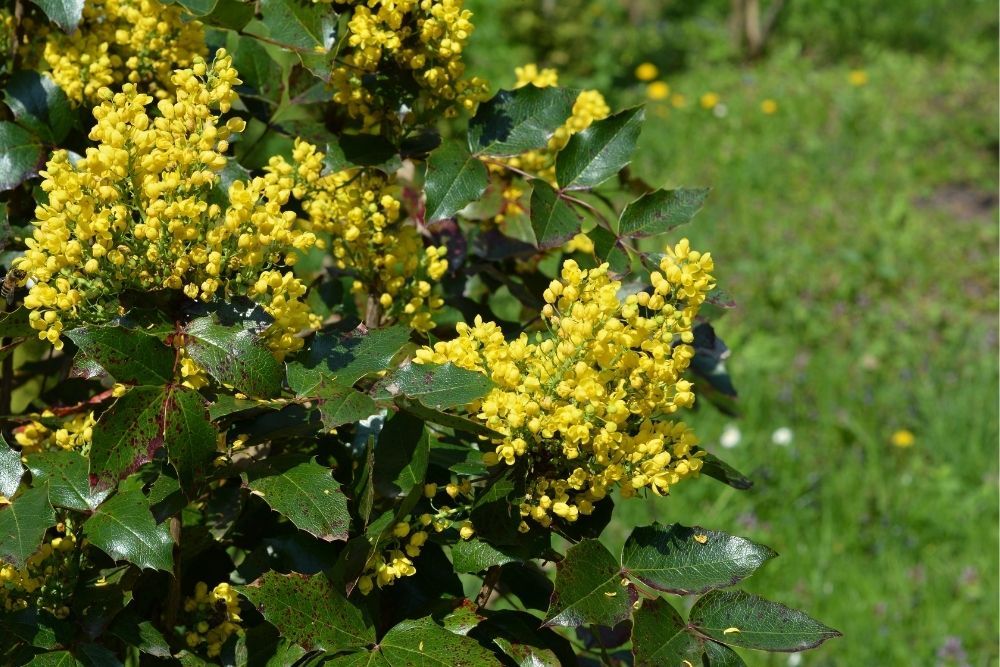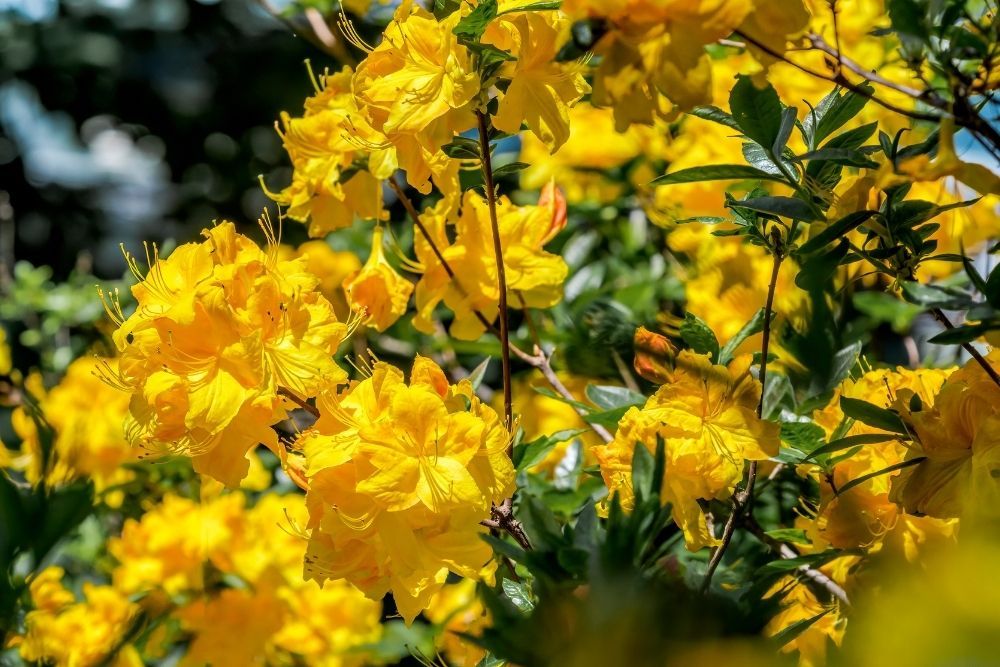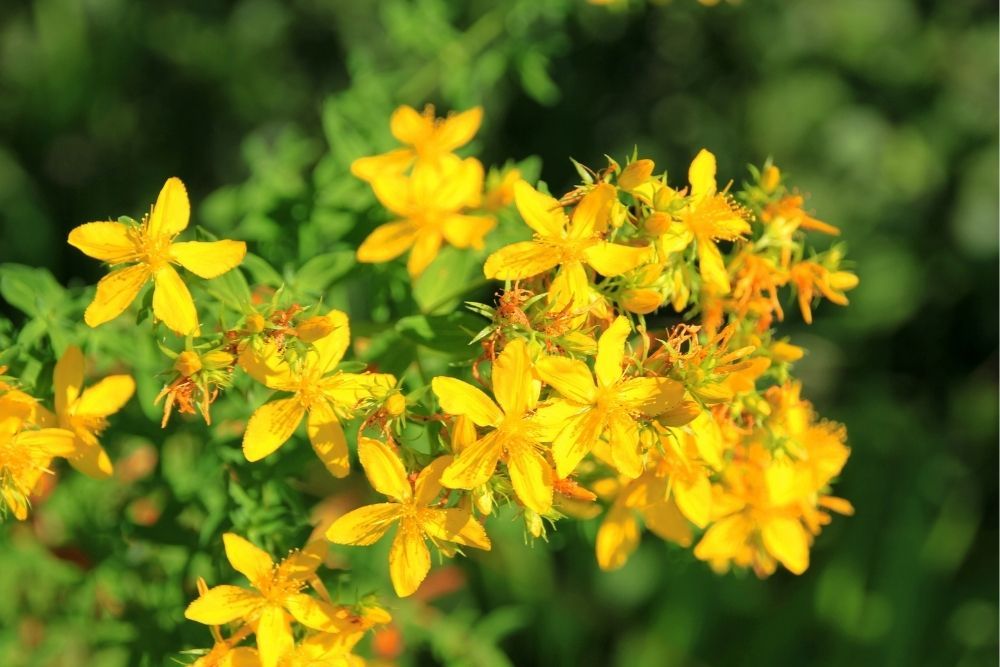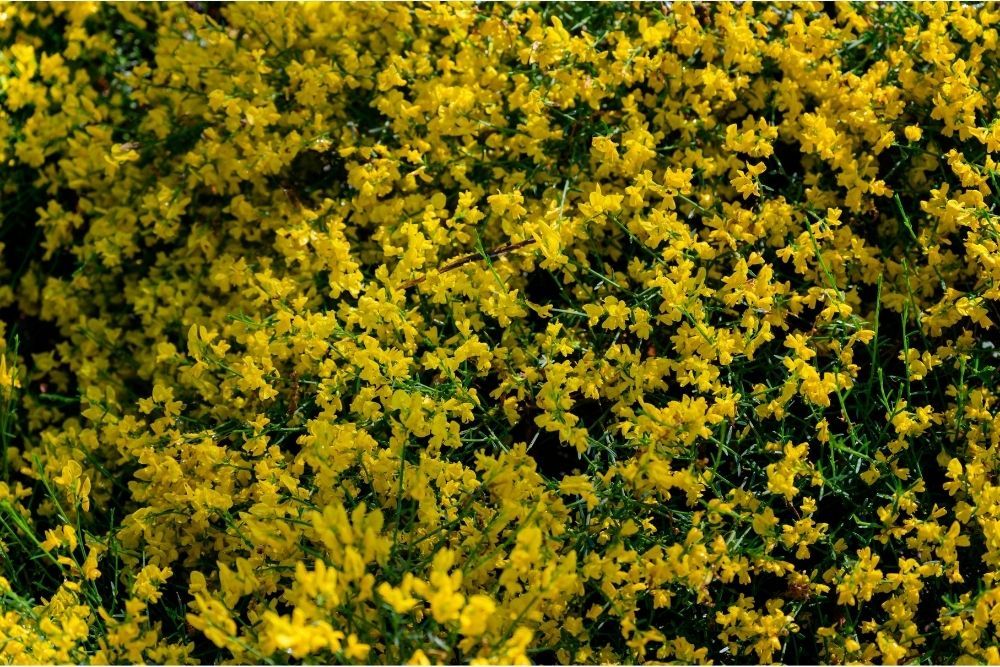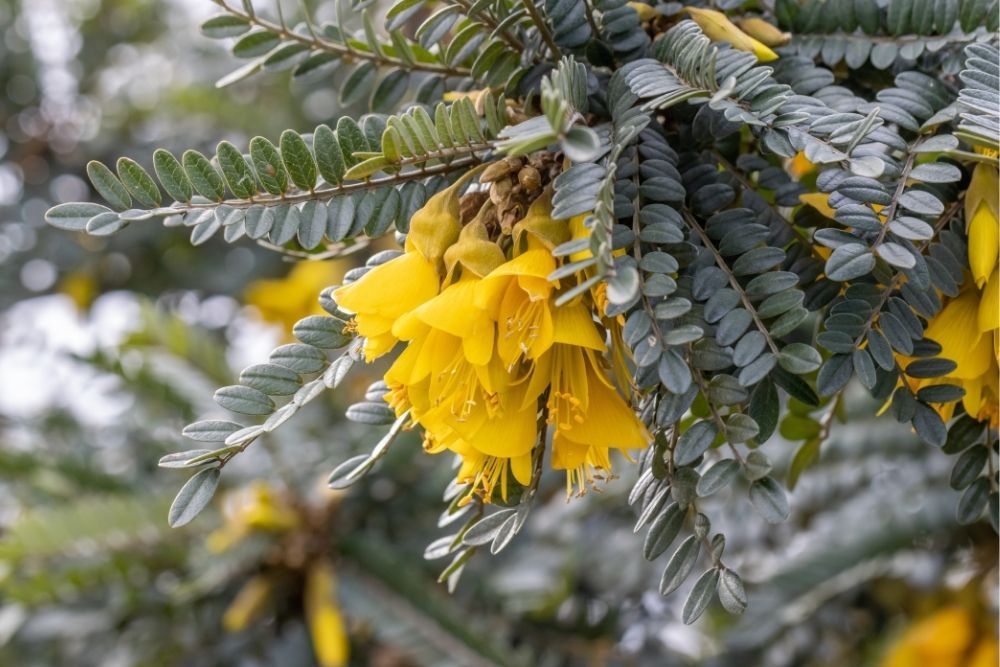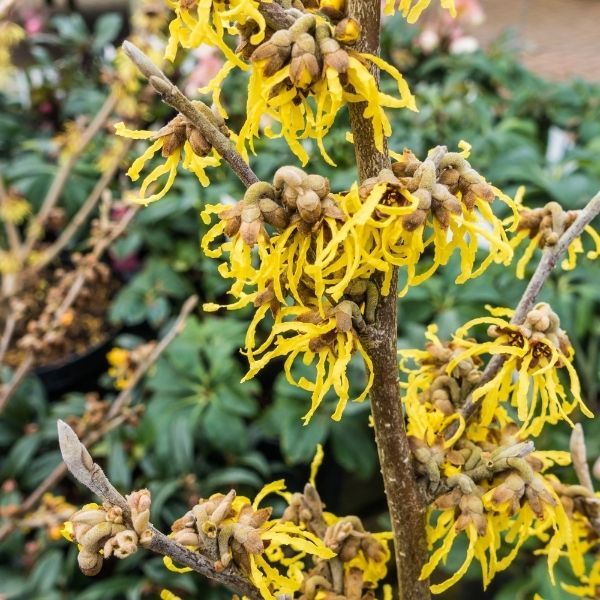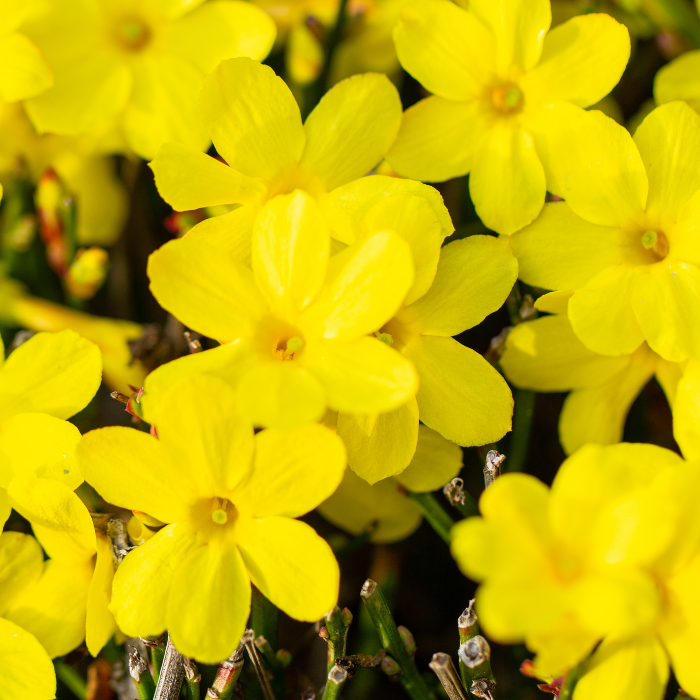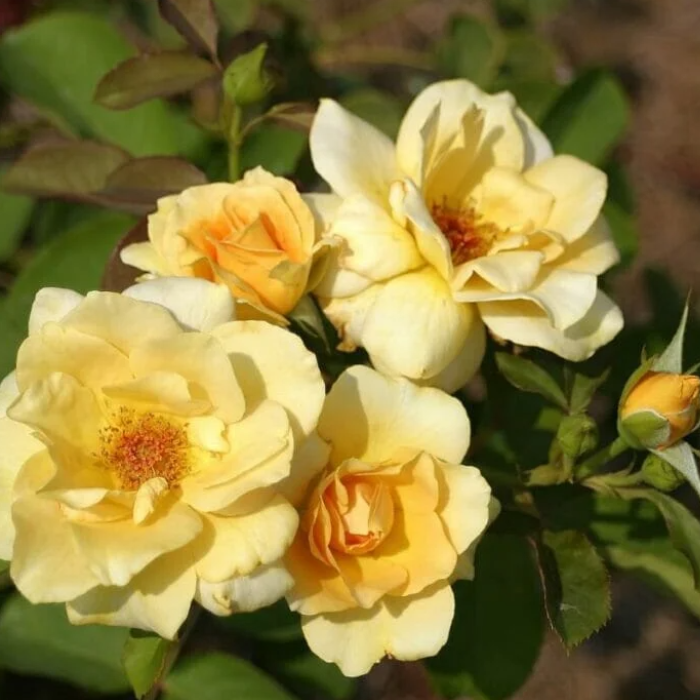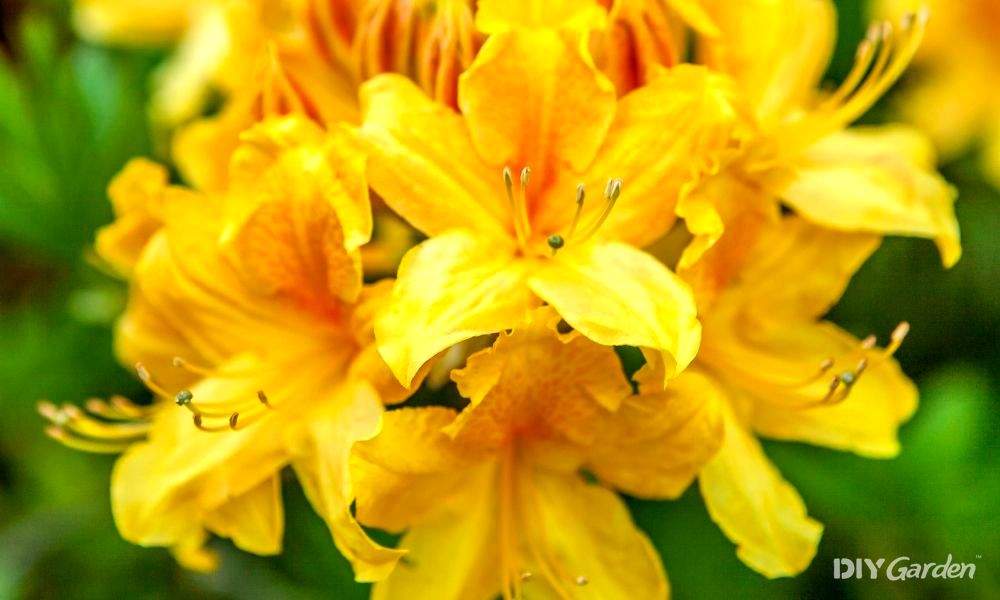
The Best Yellow Flowering Shrubs For Your Garden
Yellow doesn’t just brighten up your garden; it uplifts your mood! This energetic, vibrant colour is cheerful and warm. It provides a pop of colour that will immediately attract the gaze.
So, why wouldn’t you want glorious yellow flowering shrubs in your garden? This article will help you choose which shrubs with yellow flowers to go for.
1. Yellow Roses
Scientific name: Rosa
Roses are a must-have in any British garden. There are several yellow flowering Rose shrubs of particular note, including:
- Golden Wedding Rose
- Midas Touch
- Graceland
- Sunbright
- Summer Sunshine.
Yellow Roses are a well-known symbol of friendship and happiness. Supposedly, they will bring you good fortune in these areas when planted.
2. Cotton Lavender
Scientific name: Santolina chamaecyparissus
Cotton Lavender’s yellow pompom blooms are accompanied by green-grey powdery foliage. This evergreen plant grows from 1 – 3ft tall and makes an excellent groundcover.
It’s a Mediterranean plant, so it works best in a garden reflecting this region. Cotton Lavender’s name is deceiving, as it’s not related to lavender or cotton.
3. Forsythia
Scientific name: Forsythia
Forsythia has long branches adorned with striking yellow blooms. The blooms appear before the leaves, so you get the pleasure of an unimpeded view! This early flowerer signals the start of spring; the colder months are over!
Reaching a height of 8ft, this voluminous plant puts on a staggering show.
4. Shrubby Cinquefoil ‘Goldfinger’
Scientific name: Potentilla fruticosa
Shrubby Cinquefoil is the perfect understated yellow flowering shrub with a more subtle appearance. Its buttercup-like flowers stick around from spring right up until autumn.
It extends further in width than height, reaching 4ft wide and 3 ft tall. This makes it an ideal addition to a border.
5. Oregon Grape
Scientific name: Mahonia aquifolium
This evergreen shrub grows up to 10ft tall and 5ft wide, so it’s a lofty yellow delight. Its sweet-scented yellow flowers grow alongside spine-toothed leaves, similar in appearance to holly.
Oregon Grape is ideally suited to urban landscaping due to its high tolerance to chemical pollution.
6. Magnolia Yellow River
Scientific name: Magnolia denudata
This plant sports a less intense colouration than other yellow flowering shrubs, but that doesn’t diminish its beauty. Spreading tall and wide, this plant grows over 30ft upwards and outwards. Its buttery blooms grow to 15cm each.
The Magnolia Yellow River is a popular specimen tree as it quickly matures.
7. Japanese Rose
Scientific name: Kerria japonica
This deciduous shrub is a scrambling plant that produces golden yellow blooms. It’s a popular ornamental plant in gardens, parks, and shopping centres and is cherished amongst birds.
But think twice before you plant it in a seaside garden; it’s invasive in coastal habitats.
8. Yellow Azalea
Scientific name: Rhododendron luteum
The Yellow Azaelea’s funnel-shaped flowers release a sweet aroma, making this plant easy on the eyes and the nose. Although it smells scrummy, Yellow Azalea’s nectar is toxic, so beware.
It grows up to 5ft tall and sports luscious leaves that transform into a multitude of colours throughout the seasons.
9. St John’s Wort
Scientific name: Hypericum perforatum
The big blooms make up for what this medium shrub lacks in size. Its stunning yellow flowers with tendrils that extend out of their centre attract bees, butterflies, and other pollinators in abundance.
If you want a low-maintenance yellow flowering shrub, St John’s Wort is the plant to choose.
10. Lydian Broom
Scientific name: Genista lydia
Lydian Broom produces a bounty of blooms. It’s a compact plant sporting thousands of tiny yellow flowers. If you’re an avid gardener, you may have come across this plant’s very similar, better-known relative; the Scotch broom.
This is a low-growing plant, extending less than 2ft upwards. It isn’t fussy; it’ll even thrive in nutrient-poor soil.
11. Darwin’s Barberry
Scientific name: Berberis darwinii
The contrast between this plant’s deep, verdant leaves and orange-yellow flower clusters is where Darwin’s Barberry really stands out from the crowd. This plant isn’t shy of colour, with vibrant red stems adding to the display!
The weighty flowers hang much like a bell, facing downwards. Darwin’s Barberry is loved by birds, bees, butterflies, and deer alike.
12. Golden Oriole Azalea
Scientific name: Rhododendron ‘Golden Oriole’
Golden Oriole Azalea is a hybrid plant. Its flower buds transform from deep orange to a vivid yellow as they mature. This plant is highly resistant to pests, making it an easily maintainable addition to any garden.
Mature, Golden Oriole Azalea can reach 6ft tall and extend up to 6ft wide if grown under the right conditions.
13. Moonshadow Euonymus
Scientific name: Euonymus fortunei ‘Moonshadow’
This evergreen shrub has striking, two-toned leaves, with yellow outer edges and green in the centre. Moonshadow Euonymus produces a dense screen and is frequently chosen for hedging.
This plant changes with the seasons – every autumn, the stems turn a bright shade of red, and the leaves gain a pink tinge.
14. Yellow Hibiscus
Scientific name: Hibiscus rosa-sinensis ‘Yellow’
Yellow Hibiscus is a tropical plant that favours humid conditions. It extends to the lofty height of 15ft, so it will give you much-needed privacy from intrusive neighbours. The plant’s characteristic yellow blooms are decorated with a bright pink centre.
It’s Hawaii’s state flower and a popular ornamental in this region.
15. Golden Currant
Scientific name: Ribes aureum
Golden Currant is known and loved for its yellow flowers and edible black berries. This Blackcurrant and Redcurrant relative has a highly ornamental appearance, so it’s often grown in wildlife gardens and used for natural landscaping.
The flowers emit a characteristic fragrance similar to that of vanilla or cloves.
16. Golden Camellia
Scientific name: Camellia nitidissima
It’s best to keep Golden Camellia in warmer spots, as it’s not a big fan of the cold. It’s an evergreen plant that produces showy, yellow flowers that are waxy to touch.
Although loved as a garden plant, Golden Camellia is endangered in the wild.
17. Sun King
Scientific name: Sophora microphylla ‘Sun King’
Sun King has downward-facing yellow flowers protruding from thick stems. During winter, the blooms reveal themselves, giving your garden a well-needed pop of colour on dull, rainy days.
This plant favours full sun (hence the name) and won’t do well in shady spots. It grows 10ft tall and wide, so make sure you’ve got lots of space for this one!
18. Witch Hazel
Scientific name: Hamamelis x intermedia
Unlike Sun King, Witch Hazel loves the shade. It’s an easy-going, low-maintenance plant that doesn’t need a whole lot of care.
Witch Hazel is best known for its unique petals that are long and spindly-looking. The characteristic petals are temperature-sensitive; they’ll outstretch when the weather’s warm and curl up when it’s cold.
19. Winter Jasmine (Jasminum nudiflorum)
Winter Jasmine is a vigorous climbing shrub, so give it a trellis or obelisk to work its way up, and it’ll likely reward you with a flurry of sunny yellow flowers. Its flowers are roughly the size of a 1p coin – but it’s not their size that’s amazing, it’s their mass. Winter Jasmine produces an abundance of little blooms, putting on quite the display every January.
But there’s one thing you should know – if you’re looking for a fragrant plant, you’ll need to look elsewhere. While Jasmine plants are typically renowned for their heady scent, Winter Jasmine has no fragrance!
20. Weigela middendorffiana
Weigelas generally boast bright, rosy flowers but Weigela middendorffiana has a different tale to tell. Like the Yellow Camellia shrub, this Weigela variety sports pale yellow flowers, but in a beautiful bell shape. These appear from late spring to early summer and, if you look closely, often have yellowy-orange (or sometimes even red) throat markings.
21. Honey Perfume Rose (Rosa ‘Honey Perfume’)
Honey Perfume is a wonderful floribunda rose cultivar that produces fantastically fragrant apricot-yellow blooms. Although this shrub is originally from North America, it’ll grow well in UK gardens. Of course, it’ll work well in a Rose or Cottage garden, but it doesn’t look amiss in a modern or formal garden, either, due to its disease resistance, low maintenance nature, and repeat blooming habit.
